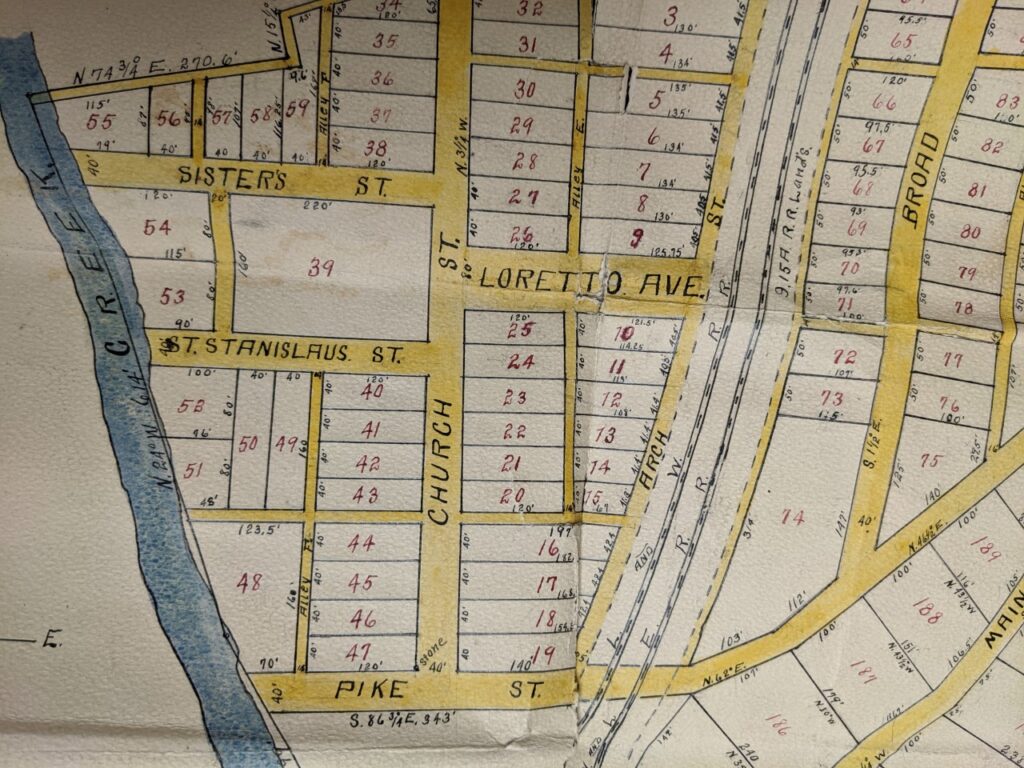Recorder History
The practice of recording real estate documents is based on English law, which was brought to the New World by the colonists. Public land registrars were appointed in colonial America to keep accurate land records. A system of registration was deemed necessary to prove who legally had claims to property.

In 1787, the Northwest Territory was organized by the Continental Congress, paving the way for westward expansion and ultimately Ohio’s statehood in 1803. However, it was the Land Ordinance of 1785 that became the foundation of the American Land System, which led to the orderly survey, sale, and settlement of public lands in the country. In April 1784, the Continental Congress adopted a plan drafted primarily by Thomas Jefferson for organizing the United States’ new western lands. The Ordinance established the rectilinear survey system that divided land into townships of six miles square aligned by north-south and east-west baselines and set aside certain lands for Revolutionary War veterans and for public schools – firstly executed by the Seven Ranges.
Thomas Hutchins, geographer of the United States, began this first federal land survey in late 1785. Hutchins’ party extended the Geographer’s Line from the Pennsylvania border due westward from the north bank of the Ohio River traveling 42 miles, forming the northern boundary of the seven ranges of townships. The survey encompassed an area of 84 complete or partial townships in eastern Ohio stretching along the Ohio River concluding near Marietta. This includes all of present-day Belmont County.
Belmont was established as the 13th and final county in the Northwest Territory (the 9th county in present-day Ohio) on September 7, 1801 – assuming lands from Washington (formed 1788) and Jefferson (formed 1797) Counties. Belmont County would ultimately take its present borders in 1813 after ceding lands to Guernsey (1810 – the seventh range) and Monroe Counties (1813 – Salem Township), respectively.
In regard to the survey, each six mile square township was subdivided into one mile square sections – with the north-south rows of townships called a range. A one mile square section (roughly 640 acres) was the smallest unit offered for sale at public auction – originally sold at our nation’s capital – Philadelphia, then New York City, respectively. Few could afford to purchase a section at $1.00 per acre, therefore land sold slowly. As a newly formed nation without much in reserves, many lands would ultimately be given to veterans of the Revolutionary War as payment for their service.
Although the state constitution did not provide for a Recorder’s office, the first state legislature mandated that a Recorder be appointed in each county by the Court of Common Pleas. Sterling Johnston was appointed as the first Recorder in 1804. The position became an elected three-year position in 1829, changed to a two-year term, and has been a four-year term since 1936. Documents were originally transcribed in the office by hand. Typewriters were introduced in 1907 with Photostat used in 1958, then Xerox in 1972. All Official Records (starting 2005) are exclusively digital today. In recent years, oil and gas exploration in the Marcellus and Utica Shale Formations has led to an increased use of the office’s public records.
Past Recorders
| Name | Term | Party |
| Mary Catherine Nixon | 1997 – 2021 | Democrat |
| Stanley Simoncic | 1976 – 1997 | Democrat |
| Nick Munas | 1953 – 1976 | Democrat |
| Lawrence W. Purdy | 1947 – 1953 | Democrat |
| William T. McCort | 1941 – 1947* | Democrat |
| Jesse A. Wilson | 1933 – 1941 | Democrat |
| A. A. Davis | 1927 – 1933 | Democrat |
| Koehler S. Fisher | 1925 – 1927 | Republican |
| C. Brady Bradfield | 1919 – 1925 | Republican |
| Arthur Stewart | 1915 – 1919 | Republican |
| E. E. Workman | 1911 – 1915 | Democrat |
| Samuel E. Lewis | 1907 – 1911 | Republican |
| John K. McFarland | 1902 – 1907 | Republican |
| A. S. Taylor | 1896 – 1902 | Republican |
| David S. Creamer | 1893 – 1896** | Democrat |
| John M. Beckett | 1887 – 1893 | Republican |
| William S. Hobbs | 1881 – 1887 | Republican |
| James A. Barnes | 1878 – 1881 | Republican |
| Louis G. Wright | 1878 (3 months)*** | Democrat |
| James A. Barnes | 1872 – 1878 | Republican |
| William S. Barnes | 1869 – 1871 | Democrat |
| John C. Bolon | 1866 – 1869 | Republican |
| John Bickham | 1863 – 1866 | Democrat |
| Felix Martin | Democrat | |
| S. M. Howey | Democrat | |
| George Anderson | ||
| M. J. Ward | ||
| Robert Giffen | ||
| William Faris, Jr. | ||
| Peter Tallman | ||
| George S. Nagle | ||
| William Faris | ||
| Sterling Johnston |
*W.T. McCort was elected Belmont County Auditor in 1946 and held office 1947-1972
**D.S. Creamer was elected Ohio Treasurer and held office from 1909-1913
***Election recount showed James A. Barnes won the election in 1877. See Clerk record 22-447 & 22-505 (Book V)